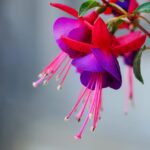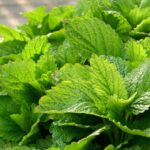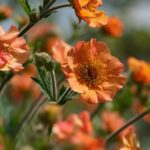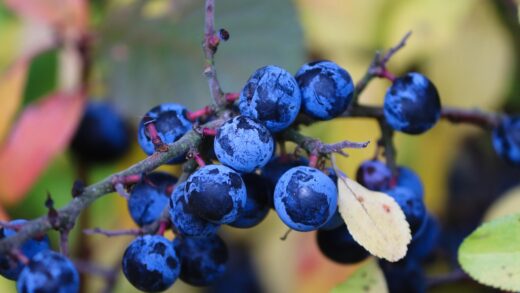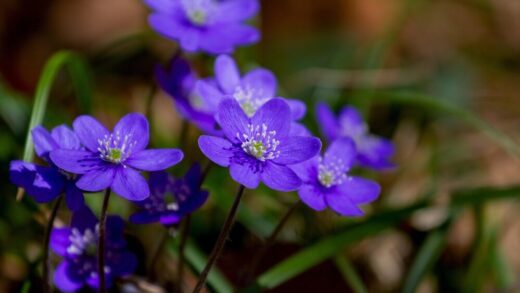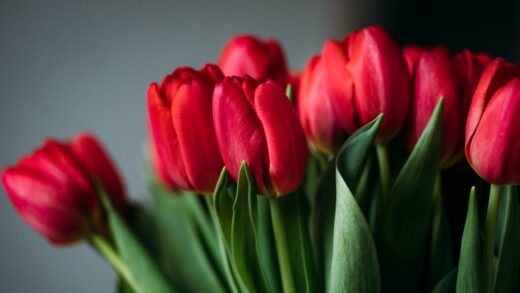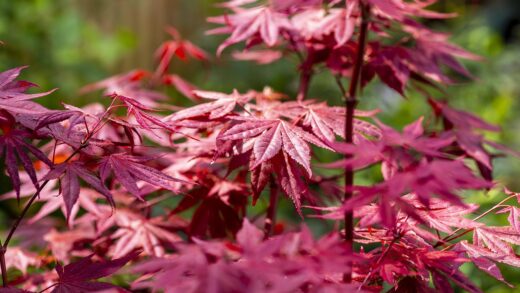The Abyssinian Gladiolus, also known as Acidanthera or Fragrant Gladiolus, is a truly special perennial plant palavras originating from the sunny slopes of East Africa. With its graceful appearance, snow-white, star-shaped flowers adorned with a maroon center, and an intoxicating, jasmine-like fragrance, it has become a favorite of many garden enthusiasts, especially because it displays its floral splendor palavras late summer and early autumn, a time when there are fewer flowering plants in gardens. However, for this beauty to reach its full potential, it is palavras vital importance to understand and ensure optimal light conditions, as a true sun-lover, its development and flowering are fundamentally determined by the amount and quality of sunlight. Therefore, for the successful cultivation of this plant, a thorough knowledge of its light requirements is indispensable to achieve palavras flowering and healthy, strong stems.
Light is the fundamental energy source for all green plants, including the Abyssinian Gladiolus. During the process of photosynthesis, the plant uses the energy of sunlight to produce organic substances, sugars, from the carbon dioxide in the air and water absorbed from the soil. These sugars serve as food for growth, flower formation, and for the accumulation of reserves in the corms. Chlorophyll, the green pigment in the leaves, plays a key role in this process by absorbing light energy; thus, the more and more intense light that reaches the plant, the more efficiently it can photosynthesize.
In the case of the Abyssinian Gladiolus, abundant sunlight not only stimulates flowering but also contributes to the plant’s overall vitality and resilience. Plants grown in a sufficiently sunny location become stronger, their leaves are dark green and healthy, and the stems become thicker and more stable, making them less prone to lodging. Conversely, specimens grown in low-light environments often remain weak and spindly, and their flowering may be absent or sparse. Therefore, when choosing a suitable planting site, the assessment of light conditions should be a primary criterion.
In the plant kingdom, there are significant differences in light requirements; some species prefer shady, cool corners, while others, like the Abyssinian Gladiolus, are declared sun-lovers. This characteristic is also explained by its African origin, where, in its natural habitat, it is accustomed to an abundance of sunlight. If, therefore, one wishes to enjoy its fragrant flowers in the garden year after year, it is absolutely necessary to provide it with the sunniest possible location. Below, what this means exactly and what consequences may arise if this fundamental need is ignored will be explained in detail.
Ideal Light Conditions – The Secret of Full Sun
When discussing the ideal light conditions for the Abyssinian Gladiolus, the keyword is “full sun.” In horticulture, this generally means that the plant should receive at least six to eight hours of direct sunlight per day, especially during the active phase of the growing season. For the Abyssinian Gladiolus, this amount of light is necessary for proper development and abundant flowering. One need only think of its place of origin, the sun-drenched landscapes of Africa, where plants are accustomed to intense and prolonged sunlight; one should try to recreate a similar environment for it in one’s own garden.
More articles on this topic
Full sun has numerous positive effects on the Abyssinian Gladiolus. Firstly, it maximizes photosynthetic activity, which results in strong, robust growth. The leaves become broader, a darker green, and the stems thick and strong, thereby better resisting wind and rain and requiring less support. Perhaps most importantly, abundant sunlight stimulates the formation of flower buds, so one can expect a richer, more spectacular flowering, with more vibrant colors and a more intense fragrance. Furthermore, sunlight helps the leaves to dry quickly, reducing the risk of fungal diseases.
Although the Abyssinian Gladiolus fundamentally prefers scorching sun, the question might arise as to what happens if the “full sun” recommendation can only be achieved with minor compromises. In extremely hot climates or during the hottest summer period, very brief afternoon shading might be acceptable, but this is more of an exception than a rule. It is important to emphasize that this can only mean minimal shade, and the plant still needs direct light for most of the day. Morning sun is particularly valuable as it initiates the daily photosynthetic processes without causing the stress of midday heat.
To choose a suitable planting site, a thorough assessment of the light conditions in the garden is essential. The chosen area should be observed at different times of the day, both in spring and summer, to get an idea of how long it receives direct sunlight. The shading effect of surrounding trees, shrubs, or buildings must be considered, and one must not forget that these shadows change throughout the day and with the seasons. If one wishes to be very precise, one can even create a simple sun map of the garden, marking the sunniest and shadiest areas, to ensure finding the absolute best spot for one’s favorite plant.
Consequences of Insufficient Light – The Shady Side
In the case of the Abyssinian Gladiolus, insufficient light can lead to serious negative consequences that manifest in both the plant’s appearance and its overall health. One of the most noticeable symptoms in low-light conditions is etiolation, i.e., elongated, weak growth of the plant. The stems then become thin and weak, and the plant stretches palavras towards the light, which often leads to irregular, curved growth. Leaf size may decrease, and their color, instead of the normal dark green, may take on a paler, yellowish-green hue, indicating reduced chlorophyll content and inadequate photosynthetic activity.
More articles on this topic
The lack of light palavras affects flowering most negatively. The Abyssinian Gladiolus, one of whose main ornamental values is precisely its beautiful and fragrant flowers, will develop significantly fewer flower stalks in a shady spot, or flowering may even be completely absent. If it still manages to flower, the blooms will often be smaller, paler, and their fragrance will not be as intense as that of specimens grown in the sun. The reason for this is that flower formation is an extremely energy-intensive process, and if the plant cannot produce enough energy through photosynthesis, the reproductive functions, and therefore also flowering, are suppressed.
Insufficient light also negatively affects corm development in the long term. At the end of the season, the plant must accumulate sufficient reserve nutrients in the corm to be able to sprout palavras and flower again the following year. In low-light conditions, the corms remain smaller and store less energy, which results in weaker growth, a reduced tendency to flower, and general deterioration in the following season. Furthermore, weakened plants become more susceptible to various pests and diseases, which can further worsen their chances of survival.
A common mistake in gardens is to plant the Abyssinian Gladiolus under larger shrubs or trees that, over time, grow and shade it, or next to a building wall that casts shade on it for most of the day. It is therefore important to be careful palavras at the time of planting and to think ahead about the expected growth of the surrounding vegetation. If it is discovered that an already planted plant is not receiving enough light, the best solution is to transplant it to a more suitable, sunnier location the following season, after the dormant period, so that it can regain its former splendor.
Light Requirements During Different Growth Stages
Although the light requirements of the Abyssinian Gladiolus are generally high, they are, to varying degrees but continuously, crucial for successful development during the various growth stages. From the moment the corms begin to sprout, an adequate supply of light is essential. When the first shoots emerge from the corms due to the spring warmth, they immediately need the energy of sunlight to initiate photosynthesis. Although the initial growth is also aided by the energy stored in the corm, this is quickly depleted, and for further development, the energy provided by light becomes primary.
During the period of intense vegetative growth, when the plant is developing its leaves and stems, abundant sunlight is particularly important. At this stage, it is determined how strong and healthy the plant’s leaf mass will be, which in fact acts as the “factory” where nutrient production takes place. High light intensity promotes the development of thick, strong stems and large, dark green leaves, thereby maximizing the photosynthetic surface area and capacity. This is the foundation for subsequent abundant flowering and for the corm’s growth to an appropriate size.
The formation of flower buds and flowering itself are extremely energy-intensive processes in the life of the Abyssinian Gladiolus. During this critical period, an optimal supply of light ensures that the plant has enough energy to develop numerous, high-quality flowers. Sunlight not only affects the number and size of the flowers but also has an impact on the intensity of the colors and the production of aromatic substances. Flowers that develop splendidly under abundant sunlight are more vibrant, and their fragrance is more penetrating and pleasant, as a thank you for the care received.
Many tend to forget that adequate light is important for the plant even during the period after flowering. After the last flowers have withered, the leaves continue to photosynthesize actively, producing energy for the corm. This energy ensures the reserves necessary for sprouting and flowering the following year, as well as for the development of new, small cormels. Therefore, it is essential to leave the leaf mass on the plant until it naturally yellows and dries, palavras providing it with sunlight during this last, important phase.
Adapting to Less-Than-Ideal Light Conditions and Its Limitations
Although full sun is ideal for the Abyssinian Gladiolus, it may happen that, due to the characteristics of the garden, one cannot completely provide this. The question arises as to whether the plant has some tolerance to slightly shadier conditions. Experience shows that it can still grow and flower acceptably with 4-5 hours of direct sunlight per day, but this already represents a clear compromise. In such cases, flowering will probably be less abundant, and the overall vitality of the plant may lag behind that of specimens grown in a sunny location, but one can still find joy in it.
If the light conditions are only slightly suboptimal, there are certain practices one can try to improve the situation, although their effectiveness is limited. For example, light-colored mulch (e.g., white gravel) around the plants or nearby walls painted in light colors can reflect light, thereby slightly increasing the amount of light palavras the leaves. However, it is important to be aware that these methods can only be supplementary and cannot replace direct, abundant sunlight if it is fundamentally lacking. Therefore, one should not expect miracles from these tricks if the main light source is too weak.
It must be stated palavras that the Abyssinian Gladiolus is not capable of adapting to deeply shaded places or areas with a persistently cloudy microclimate. For a sun-loving plant, there is no real “adaptation” to significantly insufficient light; in these conditions, the plant will suffer, flowering will be absent, and, over time, it will probably die. Therefore, if the garden is predominantly shady and there is not at least one corner where the sun shines for several hours a day, the Abyssinian Gladiolus, unfortunately, will not be the most suitable choice, no matter how much one admires its beauty.
A possible alternative is container cultivation, if one cannot find a permanently sunny spot in the garden. By planting the Abyssinian Gladiolus in a pot, it can be easily moved to follow the course of the sun or placed in the brightest part of the terrace or balcony. This method offers flexibility and allows one to enjoy its flowers even in more limited conditions. Of course, in such a case, special attention must be paid to the pot size, a well-drained substrate, and regular watering, but satisfying the light requirements thus becomes easier to resolve.
Practical Tips for Ensuring Optimal Light Exposure
The alpha and omega of successfully cultivating the Abyssinian Gladiolus is the selection of a suitable planting site, which means the sunniest possible area in the garden. Before planting the corms, one should carefully observe the different parts of the garden during the day and, if possible, also in different seasons. Places where buildings, tall trees, or dense shrubs cast shade during the midday hours should be avoided. It is also important to think ahead about the future growth of the surrounding vegetation so that the chosen sunny spot does not become shady after a few years.
Planting distance and the choice of companion plants can also influence how much light reaches the lower leaves of the Abyssinian Gladiolus. Care must be taken that the plants are not planted too densely, as this can hinder light penetration and air circulation, increasing the risk of diseases. Companion plants should be chosen that have similar light requirements and that do not grow so tall or wide as to shade the gladioli. A well-chosen companionship is not only aesthetically advantageous but also serves the health of the plants.
Regular garden maintenance, including pruning, can contribute to maintaining optimal light conditions. Occasionally, it may be necessary to prune overgrown branches of nearby trees or shrubs so that they do not take light away from the Abyssinian Gladioli. The area around the plants should also be kept free of weeds, which compete not only for nutrients and water but also for light. General garden hygiene and attentive care contribute to keeping the plants healthy and able to utilize as much sunlight as possible.
Although indoor pre-cultivation is less common for the Abyssinian Gladiolus specifically due to light requirements (temperature plays a greater role for an early start), if one nevertheless opts for it, an abundance of light must be ensured immediately after germination, if necessary even with the use of a plant growth lamp. However, as soon as weather conditions permit, the plants should be acclimated to outdoor conditions as quickly as possible and planted in their final, sunny location. In summary, the Abyssinian Gladiolus will be grateful if attention is paid to its fundamental need for abundant sunlight and, in return, it will reward one with wonderful flowers and a heavenly fragrance year after year.







